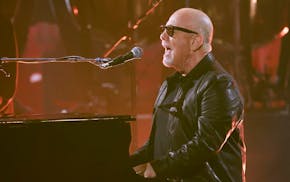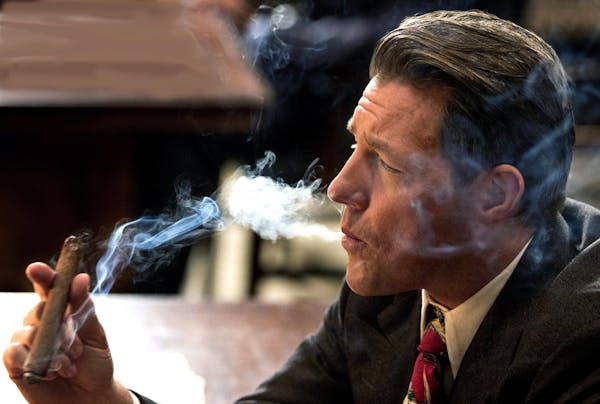LOS ANGELES – Frank Darabont likes to watch Jon Bernthal get roughed up.
In Darabont's last series, "The Walking Dead," Bernthal played doomed deputy Shane Walsh, who was stabbed in the chest by his former best friend. Now he stars in the director's film-noir-inspired series "Mob City" as Joe Teague, a mysterious detective who, at least on this day on the set, is sporting a massive shiner.
"Every great noir hero gets the crap beat out of him," said Darabont, taking a break last summer from shooting the stylish six-part project airing this month. "As you can see, we're adhering to those rules."
Staying faithful to the pulpish, cynical B-films that Hollywood churned out from the early 1940s to late 1950s is exactly why the final product is so compelling — and somewhat risky for a network best known for easily digestible fare like "Rizzoli & Isles" and "Perception." If those procedurals represent soda pop, then "Mob" is dark rye whiskey that stings as it goes down.
"The audience is coming to this with a vocabulary; they've seen the genre done and if you're not authentic, it's easily dismissed," said TNT president Michael Wright, who told Darabont early in the production cycle that he wanted the director to give the folks who supervise the network's standards some sleepless nights. "We don't want to be gratuitous, but this an inherently violent story. That's what makes it so rich."
The main story is set in Los Angeles during the mid-'40s, when gangsters such as Bugsy Siegel and Mickey Cohen were gaining a stranglehold on the city's booze business, and most policemen were on the take. Like most film noir protagonists, Teague teeters on the line between good and evil, unable to escape a haunting memory that has left him both steely and soulful.
When Darabont was in the process of casting, he told Bernthal during a long walk on the beach that Teague would be a very different character for him.
"He said, 'You know, you're used to playing caged animals. Now I want you to play the cage," Bernthal said. "This is a guy who's trying to be invisible even as he affects things and tries to protect things that are important to him."
In contrast are the fiery mobsters, giddily running the town and basking in their fame. Jeremy Luke said the dapper wardrobe helped him get into the character of Cohen, one of the most colorful — and heartless — gangsters in American history.
"When I get to set, I look like I just rolled out of bed," he said. "Then you put the gear on, walk out of your trailer, and suddenly you're a boss."
Also helping strike the right atmosphere are the lavish sets, which include a swank nightclub, an interrogation room and Siegel's luxury house.
"The palette was so rich at the time and the architecture so interesting," said production designer Alex Hadju, who counts "Agents of S.H.I.E.L.D." and "Private Practice" among his other credits. "This was big fun for me."
While Darabont remained faithful to the era's look, he took liberties with the show's primary source, John Buntin's book "L.A. Noir: The Struggle for the Soul of America's Most Seductive City." (For legal reasons, TNT could not use the desired title, "L.A. Noir.")
"I could have done a straightforward adaptation, like a 'Masterpiece Theatre' version, but I didn't want to be constrained," he said. "Instead, we've gone wild and let our imaginations run."
Bernthal gives Darabont a lot of credit for taking a genre associated with cinema and bringing it to the small screen in a grittier and more cinematic way than ever before.
"When Frank brought 'The Walking Dead' to the world, it was very much an effort to bring a genre piece to television that had never really been done before, through great storytelling and great characters," he said. "I really feel we're doing the same thing here."
For that, Bernthal is grateful — even if it means getting a few black eyes.
Neal.Justin@startribune.com • 612-673-7431 • Twitter: @NealJustin

Neal Justin: Why Conan O'Brien is a national treasure

TV review: 'Jane' is the best heroine for families prepping for Earth Day

CBS will turn the lights back on for Billy Joel concert

TV to watch: Billy Joel offers concert for those of us who aren't big shots


